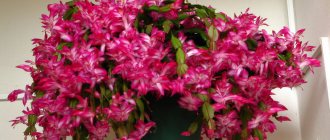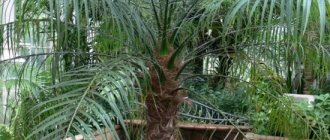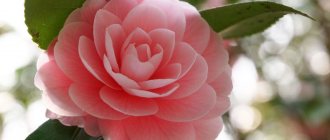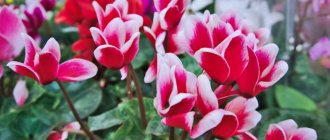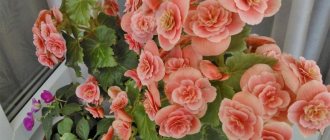For a long time, in many homes you can find spectacular flowering plants native to the subtropics and tropics, for example, orchid, fuchsia and jasmine. Flower growers began to grow bougainvillea quite recently. But in vain they did not pay attention to it for so long; the fact is that in Brazil, where it comes from, and in other countries with a similar subtropical climate, its flowering lasts all year. The tops of its stems are constantly decorated with flowers with thick, showy bracts that have a rich color. In addition, such a plant is unpretentious, it grows on the sides of roads, among stones, entwines multi-meter rocks, and also climbs the walls of high-rise buildings. Only a part of the species and hybrid varieties of the crop are successfully cultivated under indoor conditions.
Flower opening
The amazing plant Bougainvillea was named after the French traveler Louis Antoine de Bougainville, although the description of the flower was made by the French naturalist, an ardent plant collector Philibert Commerson, a participant in the circumnavigation of the world.
However, the discoverer of this amazing flower was a European woman, Jeanne Barre. Dressed in a man's suit, she boarded the ship and became the first woman to participate in a round-the-world sea voyage, helping the botanist Philibert in collecting original flowers.
It was Jeanne who, for the first time among European women, met a beautiful bush and brought a sample of it to the botanist Commerson. It was he who described and introduced the plant to Europe.
The beautiful flower was noticed in Spanish gardens in the 19th century. Then the flower hybrid ended up in the USA thanks to the Reisner brothers from Florida. There, the amazingly colored beauty began to be called “Crimson Lake” among the people. Currently, Bougainvillea is known all over the world, it has many species, and dozens of agricultural producers are engaged in breeding this beauty.
Bougainvillea diseases
A tropical flower like bougainvillea is highly resistant to diseases. But if you care for her incorrectly, her immunity will weaken.
The leaves are falling
The leafing of a healthy bush shortly before the start of the dormant period is a completely natural process. If the leaves fall at a different time, then there may be several reasons for this: the flower was exposed to a draft, it was turned the other side towards the window, or it was moved to a new place.
A recently purchased plant may also lose leaves. In this case, the discharge of greenery is associated with a move, which causes stress in the plant. If the bush has begun to become bare, then try to provide it with the most comfortable conditions for growth and proper care; in this case, very soon it will acquire lush foliage and begin to bloom.
A bush can also shed its leaves when you move it to fresh air in the summer and bring it into the house with the onset of autumn. And even if you simply move the plant to another place where there is less light, this can also cause the leaf blades to fly around.
The foliage has faded
If the color of the foliage has become faded, this may be a sign that the bush is suffering from chlorosis. As a rule, a plant is affected by it when the substrate contains too little iron and other nutrients. Feed the flower as soon as possible and spray its foliage with an iron chelate solution.
Spots on leaves
If soft white spots have formed on the surface of the leaf plates, this indicates that there is constant stagnation of liquid in the soil mixture, and the room is poorly ventilated. In this case, the room must be regularly ventilated, and watering must be reduced to moderate. All foliage with spots is torn off.
Yellowing and leaf loss
This may be due to excessively abundant watering, due to which the substrate begins to sour and the root system lacks oxygen. As a rule, this problem occurs in winter. In this case, the flower should be watered less often and less water should be used, and also stop fertilizing and moistening the foliage for a while. It will be very good if he “goes into hibernation” for a while.
The bush has become lethargic
If the bush has lost its turgor, it is recommended to treat it with a solution of a product that stimulates growth. Next, cover it on top with a bag and put it in a shaded place for 2-3 days, but do not forget to systematically ventilate it.
Growth has stopped
If you notice that the bush has stopped growing, this may indicate that it is in an overly cramped container, while the root system has nowhere to grow further. In this case, the flower will need to be transplanted into a larger container.
A very old bush (more than ten years old) may also stop growing. It becomes woody and does not form inflorescences. Experts advise, in this case, to propagate bougainvillea in a timely manner.
Root rot
If rot appears on the roots, then you can try to save the bougainvillea. Remove it from the container and carefully remove the soil mixture from the root system. If this is necessary, then first immerse the roots in a container of warm water, and then remove all the soil from them. Then inspect the roots and cut out any rotten or damaged ones. The remaining roots must be kept for some time in a solution of Fitosporin, and the foliage of the plant is also sprayed with it. After this, all cut areas are sprinkled with wood ash or charcoal powder. Then the bush is planted in fresh soil mixture and given good care.
Pests
It is extremely rare for sucking pests to settle on bougainvillea. This can be understood if a mealy coating (mealybug) or cobwebs (spider mites) appear on the foliage, and the leaves may become sticky and faded (aphids). To clean the bush from pests, you can resort to folk remedies, namely: give the plant a warm shower, use an infusion of wood ash or garlic, and you can also use a solution of laundry soap for spraying. However, if there are a lot of pests, then it is better to immediately spray the bush with a special insecticide, which can be bought in a specialized store, for example: Aktellik, Aktara or Fitoverm. To accurately get rid of harmful insects, you will need at least 2 treatments. Before you start spraying the flower, you must carefully study the instructions included with the product.
#464.Bougainvillea, maintenance and care.
Plant characteristics
In the brief description, the Brazilian flower is defined as a tropical vine or shrub with:
- bright bracts;
- small apical flowers;
- flexible, curly shoots. The stems have thorns;
- pubescent oblong or ovate leaves.
When grown at home, the “miracle flower” does not bear fruit, grows quickly and can grow 2-3 meters in a season without pruning.
How can bougainvillea be propagated?
At the end of spring (and more often at the beginning of summer), bougainvillea is propagated by cuttings. For this purpose, half-lignified young cuttings about 10 cm long with 3-4 buds are selected. The lower leaves are cut off, the cuttings are kept in warm water for about 3 hours, then in a root formation stimulator (or simply dipped in powder that stimulates root growth).
After this, the cuttings are planted in soil whose composition is similar to that of an adult plant. The only difference is that humus needs to be replaced with peat in order to lighten the soil somewhat.
Bougainvillea is also propagated at home by layering - this method can be used throughout the year. On flexible young shoots, cuts are made in several places, after which they are bent to the ground (most often, a neighboring pot with lightweight soil is used for this) and secured. This planting site is periodically watered, and when the cuttings take root, it is separated from the “parent” bush. If necessary, it can be moved to a separate container.
Growing bougainvillea from seeds is rarely done, since pollination at home is extremely difficult (in nature, butterflies do this). In addition, seeds of hybrid varieties may be sterile and unable to reproduce.
If you still want to try propagating bougainvillea by seeds, plant it in a substrate of 1 share of peat and 1 share of sand at a shallow depth (2 or 3 seed diameters). Moderate watering is required, good lighting (in winter, backlighting will be required). Bottom heating would also be useful. The required air temperature is 25-27 degrees Celsius. Germination is expected within 2-3 months.
The main diseases found in Dieffenbachia are described here.
The most popular types of indoor plants, benefits and harms
And if you want to learn how to care for Dieffenbachia at home, see this article.
See what the benefits and harms of Dieffenbachia growing at home can be here:
Bougainvillea species
Bougainvillea is a fancy climbing plant of which there are 14 South American species. Previously bred species have stems with thorny thorns, while new ones have stems without thorns or with small, safe thorns.
Today there are many hybrids with small, inconspicuous flowers surrounded by amazingly beautiful bracts that look like colored crumpled paper, for which in some countries the flower is called a paper flower. The photo of Bougainvillea shows the variety of its color palette.
The most common types of Bougainvillea are:
- naked (low smooth). A thornless vine can reach up to 5 meters and is found in the form of low-growing bushes with a straight stem. The leaves are smooth, have richly colored bracts, bloom vigorously and for a long time. The shape of the bush is given by pruning;
- wonderful (beautiful), which grows on rocky slopes. The stem, petioles, and leaf edges are pubescent. It grows quickly and can reach up to 9 meters;
- Peruvian, which was first introduced in 1810. It differs from other species in its green bark, the leaves are long without edges, and the thorns are short and straight. Blooms 2-3 times a year. The flowers are yellow and the crown of leaves is pink or purple;
- "Faith". A beautiful flower with crimson bracts that change color to pink when blooming;
- "Mini Thai" It has a small evergreen bush that can be grown at home. The originality of the species lies in its variegation.
Varieties of the “miracle flower” differ from each other in:
- form. They can be terry, simple, triangular, oval;
- size of bracts;
- color of flowers, bracts and leaves. Some varieties have multi-colored bracts, others have variegated leaves. There are varieties whose bracts change their color.
Main varieties of bougainvillea and their photos
At the moment, many varieties of bougainvillea have been bred for home cultivation. They all differ in size, color and shape of bracts.
The most popular types of indoor plants, benefits and harms
The profusely flowering bougainvillea variety Double red (sometimes called Double Beauty) has medium-sized bracts that feel double to the touch and have a crimson hue in color.
Jamaica White (translated as White Jamaica) boasts very large bracts, the shade of which remains invariably snow-white. While the bracts of California gold (or California gold) change their shade during the flowering period from bright yellow to pale.
Bougainvillea Alexandra (Alexandra) during its flowering period flaunts purple-violet, lilac, red pink or orange bracts.
The very large bracts of a variety called Bois de roses are orange at the beginning of flowering, but towards the end they become bright pink. In contrast, the bracts of Donyo (Donye) remain invariably pink throughout the flowering period.
Bougainvillea Glabra has a vine-like shape and purple spiky bracts.
Limberlost beauty variety has white double bracts, which in bright sun can acquire a delicate pink tint.
Bougainvillea Dauphine differs from other varieties in its juicy ruby bracts. It is noteworthy that the leaves of this plant variety have a wide white edge.
Bougainvillea Double lilarose is densely strewn with double bracts of a lilac-pink hue, reminiscent of flames.
A bougainvillea variety called Australian Gold has terracotta-orange bracts.
Double pink is a rather unpredictable variety. Its bracts can have different shades: from delicate, pastel pink to rich and bright fuchs, sometimes they take on a lavender hue.
Regardless of the variety, bougainvillea blooms very thickly and spectacularly. Often, the change in the shade of the bracts depends on the conditions of maintenance (lighting and other factors).
A description of the dracaena flower, as well as its types and photos, can be found in this article.
This guide describes in detail how to care for dracaena at home.
The most popular methods by which dracaena propagation is carried out are described in this article.
Growing in apartment conditions
The heat-loving “paper flower” is grown indoors and at home in the middle latitudes of the Russian Federation.
When caring for Bougainvillea at home, it is very important to comply with its environmental requirements.
The flower should be in the sunniest place so that the sun warms it for at least 5 hours. Even the scorching midday rays are not afraid of the flower.
The temperature should not be below 10 degrees at any time of the year. The flower does not like drafts. In summer it is worth taking the plant out onto the balcony. Do not allow precipitation to fall on the bush. When at rest, it is recommended to move it to a cool place (12-16 degrees). The bush does not like frequent changes of location. During the development period, the temperature should not exceed 22-25 degrees.
Air humidity should be increased. Therefore, the air around the indoor plant must be frequently moistened with a spray bottle so that drops of water do not fall on the bracts. You can humidify the air using a container filled with water.
During active growth, the bushes should be watered abundantly so that the soil is constantly moist. To know how to water a flower correctly, you should listen to the advice of flower growers, who claim that you can only moisten the leaves and bush with well-settled or boiled water 1-2 times a week, and in the fall - once every 15-20 days.
Pour water into the pot until it flows out of the holes in the bottom. Do not allow water to stagnate in the pot. Be sure to empty the water from the pan. If leaves fall from a flower in winter, then you need to stop watering until February.
Bougainvillea indoor flowers are propagated by stem cuttings, air layering, grafting, and seeds.
The fertilizers that Bougainvillea needs must contain phosphorus, potassium and iron. Overfeeding with nitrogen fertilizers is unacceptable. Fertilize with fertilizer solutions.
The soil should be universal and light.
The pot should be 2-3 cm larger than the root system along with the soil. A large pot will cause rapid growth of the root system and green mass, and flowering will be weak. A pot that is too tall and wide is not suitable for a bush. At its bottom there must be a drainage layer with a thickness of 30 to 40 mm, made of large pebbles, expanded clay or polystyrene foam.
Why doesn't bougainvillea bloom?
If bougainvillea does not form inflorescences when grown indoors, this indicates errors in care or maintenance conditions:
- In winter, the flower was not maintained correctly, which is why it did not have a full dormant period.
- Throughout the year, the plant did not have enough sunlight.
- An excessively large container was chosen for planting, and the root system of the plant had not yet had time to fill it completely.
- In the summer, in damp and cool weather, the bush lacked warmth and light.
- Too much nitrogen was added to the soil mixture.
If you are sure that you have not made such mistakes in care, but the flowers still do not appear, then you can try to make bougainvillea bloom. To do this, stop feeding and sharply reduce the frequency of spraying and watering. It is necessary to care for the plant in this way until flower buds form on the young shoots. After this, the bush is again systematically fed (but do not overdo it!) and watered. Remember that if you properly care for the bush and give it everything it needs, it will certainly delight you with lush flowering.
Replanting and pruning Bougainvillea
When caring indoors, it is important to properly replant and prune the plant.
The best time for replanting is considered to be the beginning of spring growth. You should not replant the flower into a large pot. The smaller the pot, the more abundant the flowering will be. A young bush must be replanted annually, and adults - once every 3-4 years.
To prevent the flower from getting sick after transplantation, it is recommended to transfer it to a new pot and add the missing soil. To make the flower more colorful, you can plant two bushes with different colored stipules in one pot.
They give the bush the desired shape using pruning, which also enhances flowering. Several prunings are carried out throughout the year, cutting off dried stems and unattractive inflorescences.
Over the course of one year, several prunings are carried out. Fading bracts are cut back to a third of their length. Trim only young shoots. Repeat pruning in the fall until dormancy begins. The shoots in the form of vines left on the bush look impressive.
An ancient Indian legend about the beautiful Bougainvillea tells that once upon a time she was a charming girl whose beauty was envied by an evil witch. Envy overwhelmed her, and she turned the girl into a vine with inconspicuous small flowers. The gods took pity on the innocent victim and allowed her to endlessly “bloom” with leaves. This is how a flower of charming beauty appeared.
If you want to buy bougainvillea in a pot
It is better to buy bougainvillea (like any indoor flowers) in stores rather than in markets—indoors create more favorable conditions for flowers. Take your time and carefully inspect the plant: there should be no spots on the leaves and bracts, wet rotting areas, dry tips and, of course, no insect pests. The plant should not be drooping or withering. A strong flower will better withstand a change of environment.
Immediately choose a permanent place for bougainvillea: this plant has a very negative attitude towards change and rearrangement. For this reason, immediately after purchase, it can shed a significant amount of foliage and flowers. There is no need to worry - soon the plant will get used to the new place and quickly recover.
The price of indoor bougainvillea in the store starts from 350 rubles per copy. These are small plants that you have to grow yourself. You can also purchase large adult plants, whose decorative value is high, as well as their financial value. In particular, a tree 160 cm high, which can decorate both a house and a summer cottage, can cost 36,000 rubles. The price of a mature and large bougainvillea in the form of a liana will be half as much - about 15,000 rubles.
If the roots of a newly purchased plant are visible through the drainage holes in the pot, the bougainvillea should be replanted immediately, even though it is blooming. In this case, the flowers will have to be removed.
Bougainville Photos
Origin
The birthplace of the bougainvillea flower is Brazil, but it was discovered and named by the French traveler botanist Louis Antoine de Bougainville, who brought this wonderful plant to the eastern hemisphere. Here it was acclimatized and a hybrid was bred. In its homeland, bougainvillea can bloom for about 9 months.
Bougainvillea is classified as a shrub, but its branches have thorns and are able to cling to support, like a vine. The unique bright color of the plant is given not by flowers, but by bracts; they come in crimson, pink or white.
If you look at a photo of bougainvillea during the flowering period, you can’t see the leaves behind the bright bracts. Bougainvillea is also called paper flower.
